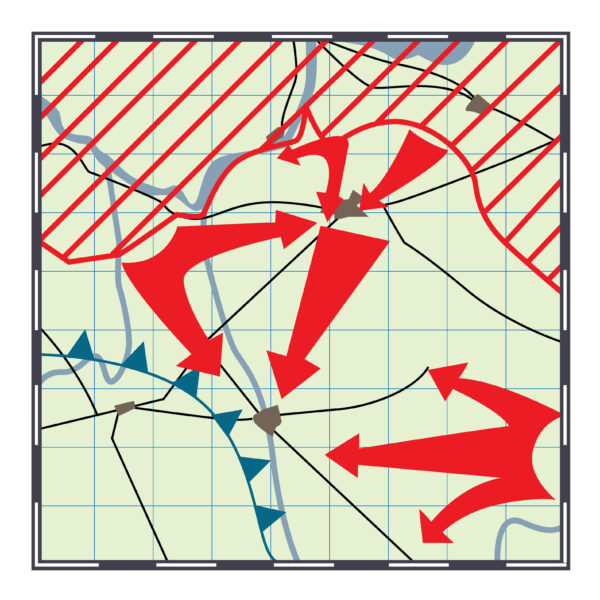Digitizing your records is a major event, and it probably took much planning and effort for you to accomplish it. But you can’t stop there! Once your records are converted to digital, you need to store them somewhere.
In this article we’re going to describe digitization and project delivery, list the common methods of digital data storage, and provide a recommendation on how to be prepared for this last part of the project.
Digitization Explained
Digitization is the process of converting records from hard copy to an electronic format. In a broader sense, digitization also encompasses the migration of already-digital images and data from one system to another.
Common forms of hard-copy digitization include:
- Paper to digital records: This involves converting various types of files—such as office records, HR files, and criminal reports—into digital formats.
- Large-format scanning: This is used for specialized documents like engineering or planning drawings.
- Book scanning: In some cases, entire books are digitized and captured in their original book format. Other times, the books are disbound or cut to be fed through a high-speed scanner.
Another popular method of digitization involves various types of microform, including microfilm reels, microfiche sheets, and aperture cards. While these formats differ, they’re often collectively referred to as “microfilm” for simplicity.
Again, the term “digitization” refers to either converting these types of records into a digital format or migrating them from one digital system to another.
Project Execution & Delivery
In any digitization project, the scanning process itself is just one part of the equation; what you do with the digitized images after delivery is equally important. For example, in a paper scanning project, we start by receiving the hard-copy records and preparing them for scanning. After scanning the documents, we conduct post-image processing and indexing. Finally, we deliver the digital files to you, typically via a USB drive or via FTP transfer.

However, once you’ve received the digitized files, you’ll want to have a plan for how to organize and store them. This can include having an already-implemented document management system that you’ll be importing the files into, or a location on your network drive where they’ll be stored. You’ll also want to think about who will have access and who will be the “administrator” of the records or system on a go-forward basis.
By having the end result in mind before you start, you’ll improve your chances of seamlessly using the records once they’re scanned, instead of getting stuck right at the end because you didn’t prepare.
Types Of Storage
Hosted application
A hosted application allows you to access your files through an internet connection, with your data stored by an external entity that also provides software access. If you opt for our hosting service, you’ll use our Digital ReeL application to access your documents and manage user permissions.
Onsite system
An onsite system works similarly to a hosted application but is accessed through your local network. Users can retrieve files via various workstations or through an internal network where the platform resides. Some organizations prefer this method for the perceived increase in control and security.
Network drive
Storing data on a network drive is another way to provide file sharing within an organization’s internal network. However, this is a less technically sophisticated solution, as it essentially consists of folders organized in a typical Windows directory structure.
Removable media
Portable storage devices like USB drives and DVDs are useful for smaller data sets or as backup solutions. Their main drawback is their physical vulnerability; they can get lost, broken, or damaged. If these are your only copies, your data could be lost.

Reverse Engineer Your Project
When planning a digitization project, we always recommend starting with the end in mind. In other words, you want to reverse-engineer the project so you begin by knowing what success looks like, then work backwards to determine the steps you’ll take toward that success.
A few questions to ask yourself at the beginning include:
- Where are the images going?
- Who’s going to use the images and data?
- What do you want to happen once they’re digitized?
- Where are they going to be stored, and who will have access to those?
- Who will be the overriding administrator who assigns access and decides the results of any discrepancies?

To minimize surprises at the end of the project, it’s important to begin thinking about each of these questions at the beginning—even if you don’t fully know the answers yet. It’s especially important to start thinking about your choice of storage method and accessibility considerations, as these will influence your project’s scope and overall requirements.
For more details about reverse engineering and effective management of digitization projects, see our article titled “Walk Backward To Sprint Forward.”
Digitization has fundamentally changed the way we store and manage data. Before setting out on a digital conversion project, it’s essential to understand the process, consider your end goal, and have a solid plan for storage. Well-executed scanning and storage strategies will ensure that your valuable and likely one-of-a-kind data remains accessible and secure in our increasingly digital environment.
Next Steps
Reach out to us today! Click the “Get Your Quote” button below, fill out the form, and we’ll quickly reply to you to discuss your project.
Further Reading
Digital Hosting & Colocation
Are your hosted records colocated at multiple sites? Learn about the benefits of colocation and why it’s important for your data.
How Does Digital ReeL Host Your Data?
Looking for a way to host your digital records? See how our Digital ReeL application stores your documents and the security methods used to protect them.
5 Vetting Questions For A Document Scanning Service
How do you choose who you’ll work with for your document scanning project? In this article we’ll give you five vetting questions that should get you started on the right foot.

